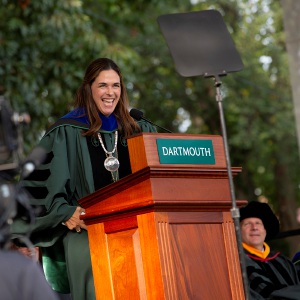Out & About: East Barnard Linen Fair part of company’s effort to bring back flax
| Published: 08-30-2024 7:01 PM |
EAST BARNARD — Flax might best be known for its use in creating linen, a lightweight fabric popular for clothing.
But what those unfamiliar with the crop might not know is that flax also is prevalent in everyday items, from rope to car panels to rolling papers.
“It’s used in so many industrial applications it’s just really crazy when you really start to learn about it,” Green Mountain Linen founder Robin Maynard Seaver said. “It’s so useful for so many things.”
Education is one of the main goals of the South Royalton-based small business’ East Barnard Linen Fair, which will take place next Friday through Sunday. The free event begins Friday night at the East Barnard Church with a reception for the 11 artists showcased in the Flax Art Exhibit. From 10 a.m. to 4 p.m. Saturday and Sunday, activities — including demonstrations, workshops and hands-on activities — will center around East Barnard Community Hall, located at 5324 Broad Brook Road. More information and a complete schedule can be found at eastbarnardlinenfair.org.
This is the third year the fair will take place and it coincides with the beginning of the flax harvest, Maynard Seaver said. Attendees will have a chance to see — and partake if they so choose — in that process. A short walk from the Community Hall, there is a quarter acre of flax planted at Sue Schlabach’s home.
“Literally people can see it growing in the fields and all the steps for it to become a fabric,” Maynard Seaver said.
Flax was prevalent in the United States’ earliest days — including in the Upper Valley. In books that detail the early history of Pomfret and Royalton, for example, there is mention of residents growing and processing flax.
It became less prevalent with the growth of the cotton industry and the invention of the cotton gin, Maynard Seaver said. Today, the majority of flax that is grown for linen is produced in Western Europe, including France, the Netherlands and Belgium. It is then sent to China to be processed.
Article continues after...
Yesterday's Most Read Articles
 Hundreds of alumni sign letter urging Beilock, Dartmouth to make a stand for academic freedom
Hundreds of alumni sign letter urging Beilock, Dartmouth to make a stand for academic freedom
 Kenyon: A year later, effects of mass arrests at Dartmouth linger
Kenyon: A year later, effects of mass arrests at Dartmouth linger
 ‘A bit Kafkaesque’: Federal judge spars with government lawyer over status of Dartmouth international student
‘A bit Kafkaesque’: Federal judge spars with government lawyer over status of Dartmouth international student
 Woodstock demotes police chief to patrol officer
Woodstock demotes police chief to patrol officer
 High school baseball: Windsor rebuilds while Thetford shines
High school baseball: Windsor rebuilds while Thetford shines
 Outgoing Alice Peck Day CEO led hospital through growth and change
Outgoing Alice Peck Day CEO led hospital through growth and change
“We just don’t have that infrastructure here in North America because cotton came along. Linen sort of faded away,” said Schlabach, who helped Maynard Seaver start Green Mountain Linen. The business is exploring opportunities to bring the specialized equipment used to harvest flax to the United States to help bring back the flax and linen industry.
“I really feel like it’s a good crop for New England,” Maynard Seaver said, adding that growing season is around 95 days. She sees it as being a good fit for landowners who could grow it to supplement their incomes.
“Part of our mission is … teaching people how they can grow it,” Maynard Seaver said.
Part of the company’s mission also is promoting soil health: Flax is a cover crop and its root system can help heal soil in fields that have been used for other crops such as corn, which can deplete the soil. Flax roots can reach down into the soil and bring nutrients to the surface. It is also generally easy to grow and maintain.
In the last few years, Green Mountain Linen has been planting flax at fields in different locations in the Broad Brook Valley, including hills and valleys.
“It was interesting to see how flax grew in different environments,” Schlabach said, adding that the crop did better in valleys.
Schlabach said it has been relatively easy to grow and treat the flax. After the seeds are planted, she keeps an eye out for weeds to pull that could keep the flax from blooming.
“Once the flax got to several inches tall, it started leafing out and filling in enough that it really has taken care of itself for the most part,” she said.
As of last week, the flax in her quarter-acre field was a little over 2-feet tall, about a foot shorter than the ideal.
“We’re aiming to have the longest possible continuous thread … out of the center of the plant,” which is thin and topped with purple flowers, she said. “That is really what is sought after to be spun and woven.”
Longer threads are stronger and more durable, Schlabach said, adding that items made from linen can last much longer than the mass-produced “fast fashion” that is prevalent. “They’re heirloom quality they can be passed down from generation to generation.”
Harvesting it can be more time intensive than harvesting other natural fibers, such as wool.
“There’s more steps to go,” Schlabach said. After it is pulled, it must be laid out to dry. Then, the longer parts of the plant must be separated for linen, which can eventually be spun and woven into fabric. “It is quite involved.”
One of Schlabach’s favorite parts of the fair is seeing children engage with older farm equipment. She also likes talking to people about the possibilities flax could bring to the region.
“It’s rooted in the past, but with some promise for the future,” she said.
Liz Sauchelli can be reached at esauchelli@vnews.com or 603-727-3221.









 Amphibians’ migration routines are getting more difficult. These brigades are trying to help.
Amphibians’ migration routines are getting more difficult. These brigades are trying to help. Art Notes: Two Upper Valley events to feature video game soundtracks
Art Notes: Two Upper Valley events to feature video game soundtracks Sandra Oh to speak at Dartmouth graduation
Sandra Oh to speak at Dartmouth graduation Roman Catholics mourn Pope Francis
Roman Catholics mourn Pope Francis
